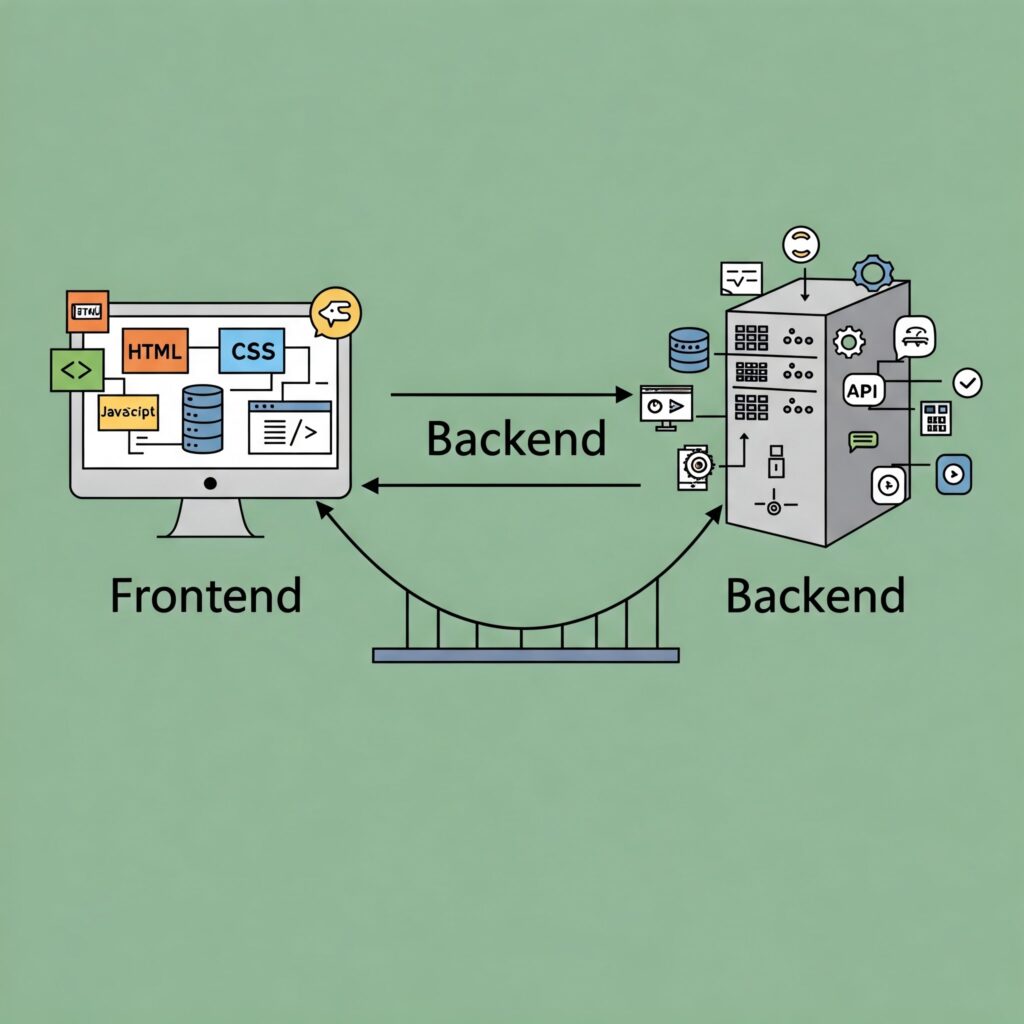
The engine room of any successful software company is powered by its engineers.
From the fresh-faced graduate eager to write their first production-ready code to the seasoned veteran architecting complex systems, each level of engineer plays a crucial and distinct role.
Understanding these roles – junior, mid-level, and senior – is vital not only for aspiring engineers charting their career paths but also for companies aiming to build effective and well-balanced teams.
In this blog post I’ll talk about the responsibilities, expectations, and growth trajectories associated with each of these important engineering positions.
The Eager Apprentice: The Junior Software Engineer
The junior software engineer is typically at the beginning of their professional journey.
Often fresh out of university or a coding bootcamp, their primary focus is on learning and applying foundational software development principles under the guidance of more experienced team members.
They are the building blocks of the team, contributing to smaller, well-defined tasks and gaining practical experience in the company’s tech stack and development processes.
Key Responsibilities:
- Code Implementation: Writing clean, well-documented code for specific, often smaller, features or bug fixes assigned to them.
- Learning and Development: Actively seeking knowledge, asking questions, and absorbing best practices from senior colleagues. This includes understanding coding standards, testing methodologies, and version control systems.
- Task Execution: Completing assigned tasks within estimated timelines and escalating any roadblocks or challenges promptly.
- Testing and Debugging: Writing unit and integration tests to ensure the quality of their code and assisting in debugging issues.
- Code Reviews: Participating in code reviews, both receiving feedback on their own code and learning by reviewing the code of others.
- Tool Familiarization: Becoming proficient with the development tools, IDEs, and platforms used by the team.
- Documentation: Contributing to technical documentation for the features they work on.
Expectations:
- Technical Proficiency: A solid understanding of fundamental programming concepts, data structures, and algorithms. Familiarity with one or more programming languages relevant to the company’s tech stack.
- Learning Agility: A strong desire to learn and adapt to new technologies and methodologies.
- Communication Skills: Clear and concise communication, both written and verbal, especially when asking for help or providing updates.
- Teamwork: The ability to collaborate effectively with other team members and follow instructions.
- Proactiveness: Showing initiative in identifying learning opportunities and seeking clarification when needed.
- Attention to Detail: Writing accurate and well-tested code.
- Time Management: Managing their time effectively to complete assigned tasks within reasonable estimates.
Growth Trajectory:
The primary goal for a junior engineer is to solidify their foundational knowledge and gain practical experience.
Over time, they will gradually take on more complex tasks, require less direct supervision, and start to contribute more independently.
They will develop a deeper understanding of the codebase, the product, and the overall software development lifecycle.
This growth typically involves:
- Increased Complexity of Tasks: Handling more intricate features and bug fixes.
- Reduced Supervision: Requiring less guidance and being able to work more autonomously.
- Broader Technical Skills: Expanding their knowledge of different technologies, frameworks, and tools.
- Problem-Solving Abilities: Developing stronger analytical and debugging skills to tackle more challenging issues.
- Ownership: Taking greater ownership of their assigned tasks and ensuring their successful completion.
The Independent Contributor: The Mid-Level Software Engineer
As a software engineer gains experience and demonstrates proficiency, they transition to the mid-level. This role signifies a greater degree of autonomy, responsibility, and technical expertise.
Mid-level engineers are expected to contribute significantly to projects, solve more complex problems independently, and start taking on some leadership responsibilities within their immediate team.
Key Responsibilities:
- Independent Development: Designing, developing, and deploying features with minimal supervision.
- Problem Solving: Analyzing and resolving complex technical issues.
- Code Quality: Writing high-quality, maintainable, and scalable code.
- Technical Design: Contributing to the technical design of features and components.
- Mentorship: Providing guidance and support to junior engineers.
- Code Reviews: Conducting thorough and constructive code reviews for their peers.
- Collaboration: Working effectively with product managers, designers, and other stakeholders.
- Testing Strategies: Developing and implementing comprehensive testing strategies.
- Performance Optimization: Identifying and implementing solutions to improve application performance.
- System Understanding: Developing a deeper understanding of the overall system architecture and its components.
Expectations:
- Strong Technical Foundation: A deep understanding of core programming principles, design patterns, and software architecture.
- Proficiency in Multiple Technologies: Expertise in several relevant programming languages, frameworks, and tools.
- Problem-Solving Prowess: The ability to independently diagnose and resolve complex technical challenges.
- Communication and Collaboration: Excellent written and verbal communication skills, enabling effective collaboration with both technical and non-technical team members.
- Ownership and Accountability: Taking full ownership of their work and delivering high-quality results.
- Mentoring Capabilities: The ability to guide and support less experienced engineers.
- Architectural Awareness: Understanding the trade-offs involved in different architectural decisions.
- Testing Expertise: A strong understanding of different testing methodologies and the ability to write effective tests.
Growth Trajectory:
Mid-level engineers continue to refine their technical skills and expand their influence within the team.
They start to take on more leadership responsibilities, mentor junior engineers, and contribute to architectural discussions. Their growth typically involves:
- Increased Project Scope: Leading and contributing to larger and more complex projects.
- Technical Leadership: Taking ownership of specific technical areas or components.
- Mentorship and Guidance: Actively mentoring and supporting junior engineers’ growth.
- Architectural Contributions: Participating in the design and planning of system architectures.
- Cross-Functional Collaboration: Working more closely with other teams and stakeholders.
- Performance Tuning and Optimization: Becoming experts in identifying and resolving performance bottlenecks.
- Strategic Thinking: Starting to think more strategically about the technical direction of projects.
The Experienced Leader: The Senior Software Engineer
The senior software engineer represents a significant level of expertise, leadership, and strategic thinking within the engineering team.
They are not just excellent individual contributors but also act as mentors, technical leaders, and key decision-makers. They are responsible for driving technical excellence, ensuring the scalability and maintainability of the codebase, and guiding the team towards successful outcomes.
Key Responsibilities:
- Technical Leadership: Providing technical guidance and direction to the team.
- Architectural Design: Designing and implementing complex system architectures.
- Strategic Planning: Contributing to the technical strategy and roadmap of projects and products.
- Mentorship and Coaching: Actively mentoring and coaching junior and mid-level engineers.
- Code Quality Standards: Defining and enforcing high code quality standards and best practices.
- Risk Assessment: Identifying and mitigating technical risks.
- Performance and Scalability: Ensuring the performance, scalability, and reliability of the software systems.
- Technology Evaluation: Researching and evaluating new technologies and tools.
- Cross-Team Collaboration: Collaborating effectively with other engineering teams and departments.
- Problem Resolution: Tackling the most challenging and complex technical problems.
- Process Improvement: Identifying and implementing improvements to development processes.
Expectations:
- Deep Technical Expertise: A mastery of relevant programming languages, frameworks, and architectural patterns.
- Proven Leadership Skills: The ability to inspire, guide, and mentor other engineers.
- Strong Architectural Vision: The ability to design scalable, maintainable, and robust software systems.
- Excellent Communication and Influence: The ability to communicate complex technical concepts effectively to both technical and non-technical audiences and influence technical decisions.
- Strategic Thinking: The ability to think strategically about the long-term technical direction of projects and products.
- Problem-Solving Mastery: The ability to tackle the most challenging and ambiguous technical problems.
- Ownership and Accountability at Scale: Taking ownership of the technical success of significant parts of the system.
- Experience with Trade-offs: A deep understanding of the trade-offs involved in different technical decisions.
Growth Trajectory:
Senior engineers often have several potential growth paths. They might continue to deepen their technical expertise, becoming Staff Engineers or Architects, focusing on specific technical domains and influencing technical strategy across multiple teams.
Alternatively, they might move into engineering management roles, leveraging their technical understanding and leadership skills to guide and grow entire engineering teams.
Other paths include specializing in areas like DevOps, security, or data engineering, becoming principal or distinguished engineers with company-wide impact, or even transitioning into product management or other leadership roles outside of pure engineering.
Building a Balanced Team:
A successful software company understands the importance of having a healthy mix of junior, mid-level, and senior engineers. Each level brings unique skills and perspectives to the table. Junior engineers provide fresh perspectives and a willingness to learn, mid-level engineers contribute significant development capacity and problem-solving skills, and senior engineers provide crucial leadership, architectural guidance, and mentorship.
A team heavily skewed towards one level can face challenges. A team with too many junior engineers might lack the experience to tackle complex problems efficiently.
Conversely, a team dominated by senior engineers might struggle with the execution of day-to-day tasks and could be an inefficient use of their valuable expertise.
Conclusion:
The journey of a software engineer is a continuous process of learning, growth, and increasing responsibility.
Understanding the distinct roles and expectations of junior, mid-level, and senior engineers is crucial for individuals navigating their careers and for companies building high-performing teams.
By creating a culture of mentorship, providing opportunities for growth, and recognizing the unique contributions of each level, software companies can create a thriving environment where engineers can reach their full potential and drive innovation.
The software engineering ladder is not just about climbing; it’s about developing the skills, knowledge, and leadership qualities necessary to build exceptional software and shape the future of technology.




